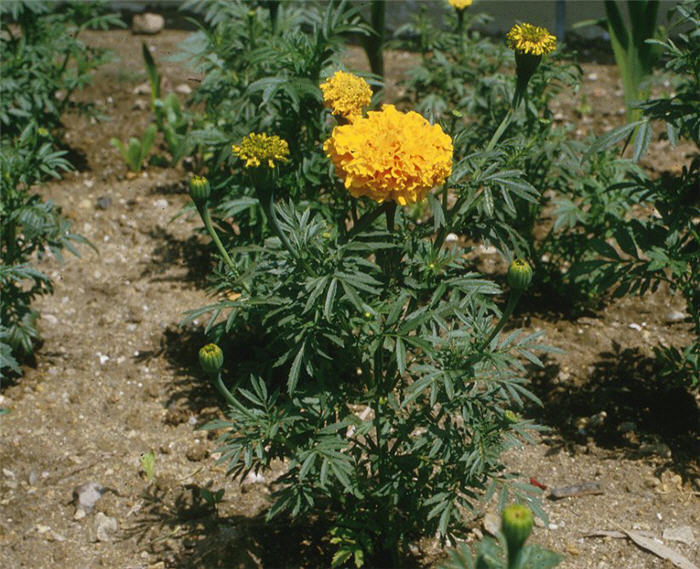| Botanical Name: Tagetes | |
| Common Name: Marigold |

-
Anatomy
-
Culture
-
Design
Plant Type
Annual
Height Range
1-3', 3-6'
Flower Color
Gold, Orange, Yellow, White
Flower Season
Summer, Fall
Leaf Color
Dark Green
Bark Color
n/a
Fruit Color
n/a
Fruit Season
n/a
Sun
Full
Water
Low, Medium
Growth Rate
Fast
Soil Type
Sandy, Loam
Soil Condition
Average, Poor, Well-drained
Soil pH
Acid, Neutral
Adverse Factors
Attracts Bees
Design Styles
English Cottage, Formal, Ranch
Accenting Features
Showy Flowers
Seasonal Interest
Summer, Fall
Location Uses
Perennial Border, Patio, Raised Planter
Special Uses
Container, Cut Flowers
Attracts Wildlife
Butterflies
Information by: Stephanie Duer
Photographer: Steve Jacobs
Photographer: Steve Jacobs
-
Description
-
Notes
The number of varieties and types of marigolds is just too vast to list here! They are all perky annuals adored by bees, butterflies, and other beneficial insects. Size, flower shape, and color vary with cultivar, but they are generally in the warm color ranges of yellows, oranges, mahogany, russets, and creams. Foliage is a rich green, is deeply cut, and aromatic. A wonderful companion in veggie gardens.
Grow in nearly any soil that is well drained, though they seem to do the best in soils with some organic content. Water moderately and ideally, not overhead. Fertilize periodically with a complete fertilizer. Deadheading with keep plants tidy and blooming.